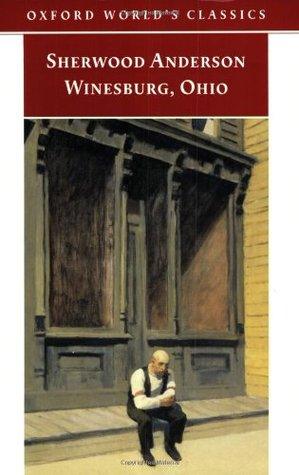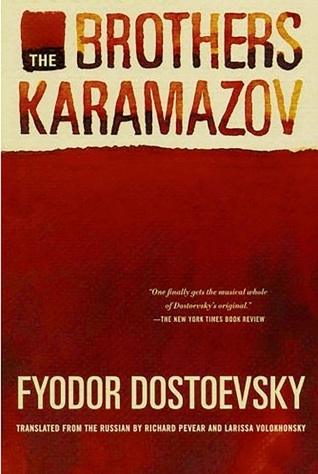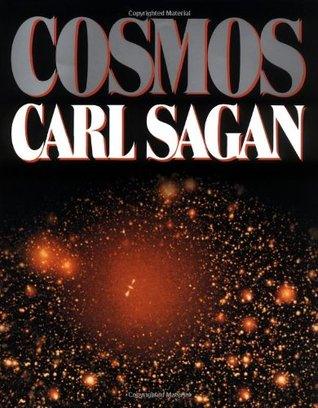Winesburg, Ohio by Sherwood Anderson Book Summary
Discover the essence of Sherwood Anderson's "Winesburg, Ohio" with our comprehensive summary, key insights, and in-depth review. Explore the themes, characters, and the profound impact of this literary classic. Perfect for students and literature enthusiasts alike!
Winesburg, Ohio Book Summary
Sherwood Anderson's Winesburg, Ohio stands as a groundbreaking work of American literature, weaving together interconnected stories that expose the hidden loneliness and unfulfilled desires of small-town residents. Published in 1919, this collection of psychological portraits revolutionized storytelling by focusing on the inner lives of ordinary people struggling with isolation and the inability to communicate their deepest truths. Anderson's masterpiece explores universal themes of human connection, sexual repression, and the grotesque nature of modern existence, offering readers a haunting glimpse into the American psyche during the early 20th century that remains profoundly relevant today.
Discover essential takeaways and a comprehensive review in our detailed A River Runs Through It and Other Stories Book Summary, Review & Key Insights to deepen your understanding and appreciation.
Winesburg, Ohio by Sherwood Anderson - Introduction
I had no idea a book could make me feel so deeply connected to a small town’s quiet struggles without any big drama or flashy plot twists. That’s exactly what happened with Winesburg, Ohio by Sherwood Anderson. I picked it up because I was curious about classic American literature and wanted something that wasn’t a heavy, intimidating novel but still packed with meaning. It’s a collection of short stories—fiction, literary fiction, Americana—set in a small Midwestern town in the early 20th century. At just about 240 pages, it’s a manageable read that you can finish in a few sittings, maybe over a long weekend.
What surprised me most was how Anderson dives into the inner lives of ordinary people—lonely, misunderstood, longing for connection—and makes you rethink how much depth there is beneath the surface of everyday interactions. It’s not about big events but those small, often overlooked moments that shape who we are. Reading it felt like eavesdropping on the secret thoughts of people you might pass by every day.
If you’re someone who loves short stories, classics, or just thoughtful, character-driven literature, this book will really resonate with you. It’s perfect for anyone who’s ever felt a bit out of place or curious about the hidden stories behind familiar faces. Honestly, it made me pause and appreciate the quiet complexity of human nature in a way I hadn’t before. I think you’d get a lot out of it too.
What is Winesburg, Ohio About?

"Winesburg, Ohio" by Sherwood Anderson is a collection of interconnected short stories that explore the lives of the residents of a small Midwestern town, revealing their inner struggles and desires. The main message emphasizes the complexity of human emotions and the often isolating nature of individual experiences. Key concepts include the theme of alienation, the search for authenticity in a conformist society, and the significance of personal connections in overcoming loneliness. Through vivid character portrayals, Anderson captures the essence of human vulnerability and the quest for understanding in a disconnected world.
About Book Author - Sherwood Anderson
Sherwood Anderson - author of book: Winesburg, Ohio
It's a genuine pleasure to introduce our next speaker. Sherwood Anderson didn't start out as the writer whose words would come to define a certain American experience. He was once a successful businessman, even an advertising man, before a profound personal shift led him away from that world. It was this very journey, this feeling of wrestling with societal expectations and his acute observations of the people in small-town Ohio, that truly fueled the creation of Winesburg, Ohio. What's interesting about Sherwood Anderson is how his own father, a natural raconteur, instilled in him a deep appreciation for the unvarnished human story from a young age. He possesses an almost uncanny ability to articulate the inner lives of seemingly ordinary individuals, to expose their secret longings and quiet desperations – a talent also richly evident in his collection The Triumph of the Egg. His own path, from the pursuit of conventional success to a deep quest for authentic expression, gives him an unparalleled understanding of the poignant, often hidden, realities he so masterfully portrays.
More Books To Find
Winesburg, Ohio - Book Overview
Winesburg, Ohio is essentially a collection of interconnected short stories that delve into the lives of various characters in a small Midwestern town. It captures their struggles, dreams, and the deep sense of isolation many of them feel.
Sherwood Anderson wrote it to explore the human condition—specifically the idea that everyone has a story, but often, those stories go unheard. He wanted to peel back the facade of small-town life to reveal the complexities and vulnerabilities beneath.
What sets it apart from other books about small-town life is its raw honesty and focus on the inner lives of its characters. Instead of just telling a story, Anderson gives voice to the unspoken thoughts and emotions that often go unnoticed, making it feel very intimate and relatable.
One story that really stuck with me is about a character named George Willard, who serves as a kind of observer in the town. His interactions with the townspeople reveal their deep-seated fears and desires. There's a moment when a character confesses their loneliness, and it’s so poignant—it’s like a mirror reflecting our own hidden struggles. It’s a reminder that beneath the surface, we all grapple with similar feelings of isolation and longing for connection.
Key Insights of Winesburg, Ohio
Winesburg, Ohio is a collection of interconnected short stories that delve into the lives of the inhabitants of a small Midwestern town. Here are five key insights:
-
Isolation: The characters often experience profound loneliness and isolation, reflecting the struggles of human connection in a small community. Each character's story reveals their internal battles and the difficulty of expressing their true selves.
-
The Grotesque: Anderson introduces the concept of the "grotesque," where characters embody exaggerated traits or obsessions. This serves to highlight the flaws and vulnerabilities of human nature, emphasizing that everyone has their own form of grotesqueness.
-
Search for Identity: Many characters grapple with their identities and the societal expectations imposed upon them. Their journeys illustrate the tension between personal desires and communal norms, showcasing the quest for authenticity.
-
The Role of the Artist: The character of George Willard represents the artist's struggle to find meaning and voice amidst the chaos of life. His interactions with other characters reflect the transformative power of art and storytelling in understanding and connecting with the human experience.
-
The Cycle of Life: The stories depict the cyclical nature of life, where themes of love, loss, and longing recur. Anderson emphasizes that while individuals may feel trapped in their circumstances, the passage of time brings change, offering hope for renewal and understanding.
These insights collectively paint a poignant picture of small-town life and the complexities of human emotion, making Winesburg, Ohio a timeless exploration of the human condition.
Who Should Read This Book
"Winesburg, Ohio" by Sherwood Anderson is essential reading for those interested in American literature, particularly modernist themes and the exploration of human emotions. Ideal for readers seeking deep character studies and insights into small-town life, the book resonates with anyone grappling with isolation, identity, and the complexities of interpersonal relationships. It's particularly valuable for students of literature, writers, and anyone intrigued by the nuances of the human experience. Those who appreciate a blend of realism and symbolism will find Anderson's work both compelling and thought-provoking, making it a timeless classic worth exploring.
Read If You Are
- Interested in exploring the complexities of human emotions and relationships in small-town America.
- A fan of modernist literature and character-driven narratives.
- Seeking a deeper understanding of the American experience and the nuances of isolation and connection.
Skip If You Are
- Not interested in character-driven narratives that explore the complexities of small-town life.
- Prefer fast-paced plots with clear resolutions rather than introspective and ambiguous storytelling.
- Dislike literary styles that focus on themes of alienation and existentialism.
Important Takeaways from this Book
-
Practice Authentic Communication: Start by sharing a personal story with someone you trust today. This matters because it fosters deeper connections and builds trust. Consider your audience; choose a story that resonates with their experiences.
-
Embrace Vulnerability: Identify one fear or insecurity you have and express it to a friend or family member. This action is crucial as it promotes emotional honesty and strengthens relationships. Ensure you choose a supportive person who will listen without judgment.
-
Observe Your Surroundings: Spend 15 minutes today sitting quietly in a public place, like a park or café, and take notes on the people you see. This practice enhances your observational skills and helps you gain insights into human behavior, which can improve your empathy and understanding of others.
-
Reflect on Your Own Life: Write a short journal entry about a pivotal moment in your life. This reflection allows you to understand your motivations and desires better, leading to personal growth. Make sure you have a quiet space to think and write without distractions.
-
Engage with Your Community: Volunteer for a local organization or community event this week. This action not only helps others but also enriches your own life by connecting you with diverse perspectives. Check local listings to find opportunities that match your interests and availability.
Book Review
Winesburg, Ohio by Sherwood Anderson was a book I picked up expecting a straightforward narrative about small-town life, but what I got was much deeper and more introspective. Each vignette delves into the lives of various characters, revealing their struggles and desires in a way that felt both poignant and relatable.
One of the strengths of the book is Anderson's writing style. His prose is lyrical and evocative, capturing the essence of human emotion beautifully. For instance, the character of George Willard is portrayed with such depth that I found myself reflecting on my own youth and aspirations. The way Anderson weaves together the stories of the townsfolk creates a rich tapestry of life that feels genuine and immersive.
However, the pacing can be a bit uneven. Some stories felt more engaging than others, and I sometimes found myself wishing for a more cohesive plot. While the individual tales are strong, the lack of a central narrative arc left me feeling a bit disconnected at times.
In comparison to other works like "The Grapes of Wrath" or "Our Town," Winesburg, Ohio offers a more fragmented yet intimate look at small-town America. It’s less about the overarching social issues and more about the inner lives of individuals, which may not appeal to everyone.
Overall, I found Winesburg, Ohio to be a thought-provoking read that resonates with anyone who appreciates character-driven stories. I would recommend it to those who enjoy literary fiction and introspective narratives, but it might not be the best fit for readers seeking fast-paced plots or action-driven stories.
Final Thoughts
If I’m being honest, finishing Winesburg, Ohio left me with a mix of admiration and contemplation. It’s a beautifully crafted exploration of small-town life, capturing the essence of human isolation and longing. The thing that surprised me most was how deeply Anderson dives into the psyche of each character; their struggles felt so real and relatable.
I’d definitely recommend this if you’re someone who appreciates character-driven stories and enjoys a more introspective read. It’s perfect for literary enthusiasts or anyone looking to reflect on the complexities of life. However, skip this one if you're looking for a fast-paced plot or conventional storytelling; it requires patience and a willingness to engage with the subtleties.
One thing that will stick with me months from now is the haunting image of the characters’ unfulfilled desires—it's a poignant reminder of our own struggles. As for re-reading, I think I’d prefer to recommend the full book over a summary; there’s something about Anderson’s prose that deserves to be experienced in its entirety.
Overall, my reading experience was enriching and thought-provoking. I found myself pausing often to reflect, which is something I always appreciate in a good book.
Frequently Asked Questions
How long does it take to read Winesburg, Ohio?
The average reading time for "Winesburg, Ohio" by Sherwood Anderson, which has 240 pages, is approximately 6 to 8 hours, depending on your reading speed. Enjoy immersing yourself in this classic exploration of small-town life and human emotions!
What makes "Winesburg, Ohio" different from other books in this genre?
"Winesburg, Ohio" stands out due to its innovative structure of interconnected short stories, deep psychological insight into small-town life, and exploration of human isolation and longing. Anderson's use of simple yet evocative language creates a poignant, intimate portrayal of his characters, setting it apart from conventional narratives.
Who is the target audience for Winesburg, Ohio
The target audience for "Winesburg, Ohio" includes readers interested in early 20th-century American literature, themes of isolation and human experience, and those who appreciate character-driven narratives. It's particularly appealing to fans of modernism and regionalism, as well as students and scholars of American literature.
Are there any criticisms or limitations of Winesburg, Ohio
Critics often point to the book's fragmented narrative and lack of a traditional plot as limitations. Some argue that its portrayal of small-town life may feel overly bleak or pessimistic, potentially alienating readers seeking more uplifting themes or cohesive storytelling.
What is the main theme of Winesburg, Ohio by Sherwood Anderson
The main theme of "Winesburg, Ohio" is the exploration of human isolation and the search for connection. Through interconnected stories of small-town residents, Sherwood Anderson delves into their inner struggles, desires, and the complexities of life, highlighting the profound loneliness often found in everyday existence.
Tags:
Ohio, Ohio Book, Ohio Book Rating, Ohio Book Review, Ohio Book Summary, Ohio By Sherwood Anderson, Ohio Description, Ohio Short Summary, Sherwood Anderson, Winesburg

Michel Fisher
Michel Fisher is a passionate fiction enthusiast and book blogger who writes about emotional reads, character-driven stories, and contemporary romance authors that captivate hearts and minds.

Winesburg, Ohio
Book Overview
Description
Winesburg, Ohio depicts the strange, secret lives of the inhabitants of a small town. In "Hands," Wing Biddlebaum tries to hide the tale of his banishment from a Pennsylvania town, a tale represented by his hands. In "Adventure," lonely Alice Hindman impulsively walks naked into the night rain. Threaded through the stories is the viewpoint of George Willard, the young newspaper reporter who, like his creator, stands witness to the dark and despairing dealings of a community of isolated people.
Key Points
Isolation and alienation
Characters
Elizabeth Willard, Doctor Parcival, Louise Trunnion, Jesse Bentley, Louise Bentley, David Hardy, Joe Welling, Alice Hindman, Wash Williams, Seth Richmond, Tandy Hard, The Reverend Curtis Hartman, Kate Swift, Enoch Robinson, Belle Carpenter, Elmer Cowley, Ray Pearson, Tom Foster, Helen White, George Willard
Publisher
Oxford University Press, USA
First Publish Date
8/5/2019
Awards
Premi Llibreter de narrativa (2009)





